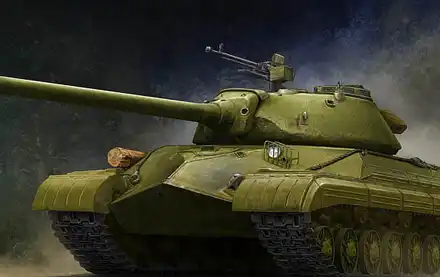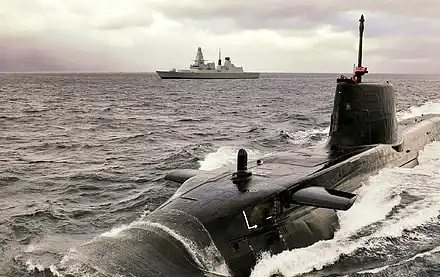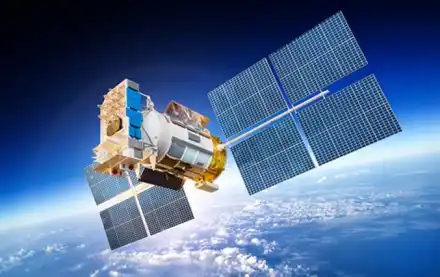




Cesare

The Messerschmitt Bf 109, a legendary German World War II fighter aircraft, stood as the cornerstone of the Luftwaffe's fighter force alongside the Focke-Wulf Fw 190. Infamously known for its operational debut during the Spanish Civil War in 1937 and its active duty until the conclusion of World War II in 1945, this formidable aircraft boasted cutting-edge features including an all-metal monocoque construction, a closed canopy, and retractable landing gear. The brainchild of Willy Messerschmitt and Robert Lusser, this aircraft was initially intended as an interceptor but evolved to fulfil diverse roles such as bomber escort, fighter-bomber, day and night fighter, all-weather fighter, ground-attack aircraft, and aerial reconnaissance aircraft.
The Bf 109 holds the unique distinction of being the most produced fighter aircraft in history, with an astounding 34,248 airframes manufactured from 1936 to April 1945. Notably, it was piloted by the three top-scoring fighter aces of all time, one of whom was Erich Hartmann, the highest-scoring ace in the history of aerial warfare. The Bf 109 consistently remained competitive with the latest Allied fighter aircraft until the end of the war and was employed by pilots from various countries fighting alongside Germany.
Design
In 1933, the Technisches Amt (C-Amt), the technical department of the Reichsluftfahrtministerium (RLM) ("Reich Aviation Ministry"), undertook comprehensive research projects to shape the future of air combat. This research resulted in the establishment of four broad outlines for future aircraft:
1. Rüstungsflugzeug I: Multi-seat medium bomber
2. Rüstungsflugzeug II: Tactical bomber
3. Rüstungsflugzeug III: Single-seat fighter
4. Rüstungsflugzeug IV: Two-seat heavy fighter
Rüstungsflugzeug III was specifically envisioned as a short-range interceptor aircraft intended to replace the outdated Arado AR 64 and Heinkel, He 51 biplanes then in service. The tactical requirements for a single-seat fighter were first detailed in the document L.A. 1432/33, which was published by the RLM in late March 1933.
The envisioned fighter aircraft needed to achieve a top speed of 400 km/h (250 mph) at 6,000 m (20,000 ft) altitude, which should be maintained for at least 20 minutes. It also needed to have a total flight duration of 90 minutes, accomplish a critical altitude of 6,000 meters in no more than 17 minutes, and feature an operational ceiling of 10,000 m (33,000 ft). The power requirement was to be met by the new Junkers Jumo 210 engine, generating around 522 kW (710 PS; 700 hp). Armament options included a single 20 mm MG C/30 engine-mounted cannon, two synchronized, engine cowl-mounted 7.92 mm (.312 in) MG 17 machine guns, or one lightweight engine-mounted 20 mm MG FF cannon with two 7.92 mm MG 17s. Additional specifications outlined that the wing loading should be kept below 100 kg/m2. The performance evaluation criteria emphasized the fighter's level speed, rate of climb, and maneuverability, in that order.
It has been suggested that Bayerische Flugzeugwerke (BFW) was initially excluded from participating in the competition due to personal animosity between Willy Messerschmitt and RLM director Erhard Milch. However, recent research indicates that all three competing companies—Arado, Heinkel, and BFW—received the development contract for the L.A. 1432/33 requirements simultaneously in February 1934. Meanwhile, Focke-Wulf received a copy of the development contract in September 1934. The powerplant was intended to be the new Junkers Jumo 210, but with the flexibility to be replaced by the more powerful, albeit less developed, Daimler-Benz DB 600 powerplant. Subsequently, each company was tasked with delivering three prototypes for head-to-head testing by late 1934.
The Messerschmitt Bf 109 was designed with a focus on simplicity and ease of maintenance. This approach resulted in a relatively uncomplicated structure and facilitated access to the engine and other systems for maintenance. The landing gear retracted through an 85-degree angle, allowing for easy removal of the wings for servicing. However, this design led to ground instability, requiring adjustments to enhance stability. The narrow wheel track and the relatively small rudder posed challenges during takeoff, especially for less-experienced pilots. To address these issues, later models were equipped with a fixed "tall" tailwheel, which significantly alleviated the problem.
The design also prioritized providing easy access to the powerplant and other components during operations. Large, easily removable panels secured by substantial toggle latches made it convenient to access the engine cowling. Additionally, various access panels allowed straightforward maintenance of the cooling system and electrical equipment. The powerplant, held in two large forged Elektron magnesium alloy legs, could be quickly removed or replaced as a unit, underscoring the emphasis on easy maintenance and serviceability. This design approach aimed to streamline maintenance and support operations from forward airfields.
The Messerschmitt Bf 109 was meticulously crafted to excel in high-speed flight and exceptional manoeuvrability. The inclusion of leading-edge slats and camber-changing flaps on the wings not only significantly enhanced lift but also allowed for unprecedented horizontal manoeuvrability, a benefit that was corroborated by the firsthand experiences of Luftwaffe veterans. The ingenious cut-off system for the coolant radiators on later models ensured that the aircraft could continue to operate even if one radiator leaked, thereby demonstrating a remarkable level of resilience in combat situations. Oberfeldwebel Edmund Roßmann's account of his experience behind Soviet lines and the accolades from Soviet machine gun technician Viktor M. Sinaisky provide valuable insights into the sophisticated design and advanced functionalities of the Messerschmitt Bf 109, including its innovative inverted engine, protective armour for the pilot, and highly automated features, which set it apart from other contemporary aircraft.
Skepticism
The Messerschmitt Bf 109 initially faced scepticism from Luftwaffe's fighter pilots due to its significant departure from the traditional biplanes they were accustomed to. In contrast, the Arado AR 80 and Focke-Wulf Fw 159 were viewed as secondary options in the competition. The Heinkel He 112, favoured by Luftwaffe leaders for its cost-effectiveness, boasted advantages such as enhanced visibility and lower wing loading compared to the Bf 109. However, despite these positive attributes, the Bf 109 outperformed the He 112 in crucial aspects such as speed, climbing, and diving capabilities during rigorous testing.
Consequently, the Bf 109 was selected for production, especially following the news of the British Supermarine Spitfire's entry into production, prompting an urgent decision to prioritize the Bf 109 for production. Simultaneously, Heinkel was tasked with a substantial redesign of the He 112. The public introduction of the Messerschmitt 109 took place during the 1936 Berlin Olympics, marking a significant milestone for the aircraft.
Operational history
During the Spanish Civil War, the Bf 109A made its initial appearance, and by September 1939, it had become the primary fighter aircraft for the Luftwaffe. This agile and powerful aircraft played a crucial role in establishing air superiority for the German military during the early stages of World War II. While initially utilized as an escort fighter during the Battle of Britain, the Bf 109 also took on various other roles, including fighter-bomber and photo-reconnaissance platform. With the introduction of the enhanced Bf 109F in early 1941, the aircraft proved its effectiveness in conflicts such as the Invasion of Yugoslavia, the Battle of Crete, Operation Barbarossa, and the Siege of Malta.
As the war progressed, the Bf 109 started to be phased out in Western Europe in favour of the Focke-Wulf Fw 190. However, it continued to serve in diverse capacities on the Eastern Front, in the Defense of the Reich, and the Mediterranean Theatre of Operations, including with Erwin Rommel's Afrikakorps. Additionally, it was supplied to various German allies, including Italy, Finland, Hungary, Romania, Bulgaria, Croatia, and Slovakia.
The Bf 109's combat prowess is underscored by the fact that it achieved more aerial victories than any other aircraft in World War II. Notably, a significant number of these victories were against Soviet forces during Operation Barbarossa. The aircraft's exceptional performance and the skill of its pilots resulted in an unprecedented number of individual pilot victory scores and a substantial tally of aerial kills. These accomplishments cemented the Bf 109's place in aviation history.
Even after World War II, the Bf 109 continued to serve in foreign air forces for many years.Its longevity is evident in its deployment by the Israeli Air Force in its early years and its extended service by countries such as Switzerland, Finland, and Romania. The aircraft's enduring presence is also illustrated by its appearance in films and its refurbishment in museums.
Legacy
The Me 109, also known as the Bf 109, underwent a significant transformation during its service in World War II. Initially a dominant force in the early stages of the war, it faced challenges from more advanced aircraft such as the Focke-Wulf 190 and the USAAF's P-51 Mustang. The introduction of jet-powered fighters further marginalized its role. However, the Me 109's impact on shaping the future of aerial warfare, particularly in paving the way for jet fighters, is a crucial part of its legacy.